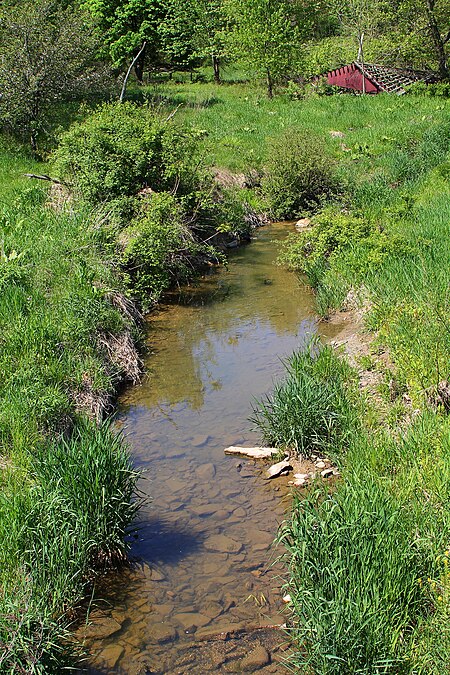Johnson Creek (Lithia Springs Creek tributary)
Rivers of Northumberland County, PennsylvaniaRivers of PennsylvaniaTributaries of the Susquehanna River

Johnson Creek (also known as Johnson's Creek) is a tributary of Lithia Springs Creek in Northumberland County, Pennsylvania, in the United States. It is approximately 2.3 miles (3.7 km) long and flows through Point Township. The watershed of the creek has an area of 4.09 square miles (10.6 km2). It has no named tributaries, but has at least one unnamed tributary. A ridge known as Montour Ridge is in the watershed of the creek and a ravine with high levels of biodiversity is present on one if its tributaries. The creek is considered to be a Coldwater Fishery and a Migratory Fishery.
Excerpt from the Wikipedia article Johnson Creek (Lithia Springs Creek tributary) (License: CC BY-SA 3.0, Authors, Images).Johnson Creek (Lithia Springs Creek tributary)
Spruce Hollow Road, Point Township
Geographical coordinates (GPS) Address Nearby Places Show on map
Geographical coordinates (GPS)
| Latitude | Longitude |
|---|---|
| N 40.9242 ° | E -76.7655 ° |
Address
Spruce Hollow Road 503
17857 Point Township
Pennsylvania, United States
Open on Google Maps








